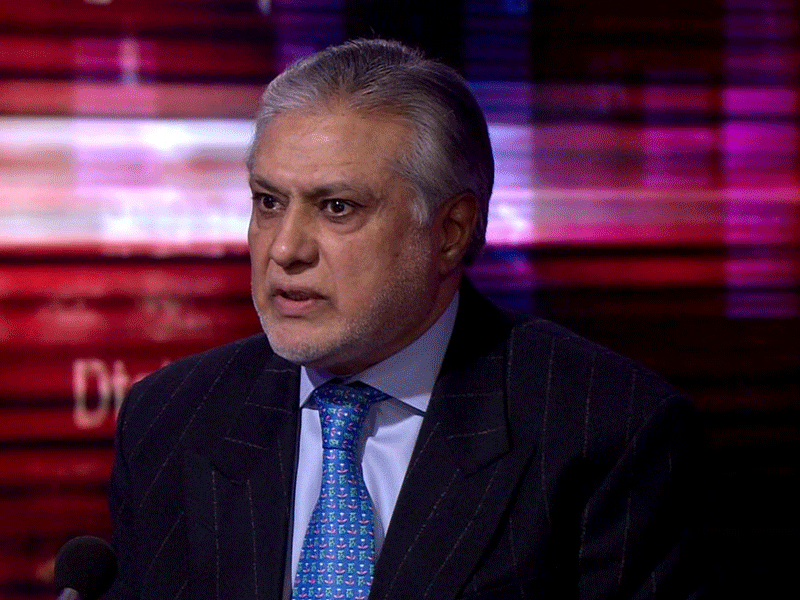Stiff fiscal challenges ahead

- 219
- 0
One would agree with the Finance Minister, Ishaq Dar, who has painted a broad-based dismal macroeconomic outlook this year, but what he missed about the hitting the bull’s eye is that the economic melt-down which is prevailing right now is the one to be controlled in short time.
In fact, it will take years and a well devised long-term policy only then can we hope for some betterment. Right now, the forecast for the inflation is hovering around 21 per cent which is unpresented in nature which point to tough economic conditions for the common man, who is already running from pillar to post to make both ends meet.
Though our economy was already in the dock for the last few years, but the abnormal floods have caused such a dent that it will take years to recover. According to the Monthly Economic Update & Outlook, the Consumer Price Index (CPI) inflation is going to be in the range of 21-22.5pc.
On the other hand, the stiff economic policies by the central bank are also causing rise in inflation as it is affecting the growth rate in real sense of the word. A recent report has forewarned about the further slowing down of the economy due the floods which have wreaked havoc with the lives and infrastructures in the country.
A lot needs to be done for the rescue and rehabilitation of flood affected section of the society and for the repair and rebuilding of the damaged infrastructure. As a matter of fact, our economic woes are daunting and unprecedented in nature.
Though a lot of expectations are being pinned on Mr Ishaq Dar to rectify the country's ailing economy, particularly to control the free fall of Pak currency against US dollar, but the ground realities are very complexed and one is not sure how Mr Dar will come to terms with the gigantic requirements of the situation. Our economy is going nose-dive and the rupee is going to further depreciate unless drastic help arrives from abroad. Meanwhile, it is also unfortunate that there is a big gap between the help pledged by various countries for Pakistan and the actual help and assistance delivered so far for overcoming the flood devastations, so this factor should also be kept in mind. There is no denying that Mr Dar is a seasoned financial experts and during his previous tenures as Finance Minister, his strategy to contains rupees free-fall against Dollar has also borne fruit, but this time the situation is very different. That's why noting can said with surety or taken for granted. During his previous tenure, Mr Dar with the help of SBP, had made dollars easily available in the market by supplying a large amount of dollars in the open market so that the rupee's devaluation can be prevented. He had also succeeded in his efforts to some extent. But right now, we have not many dollars to pump them out in the market. Financial experts say that though it was highly expected that after the approval of IMF bailout and transfer of dollars into our accounts, the rupee will strengthen again US dollar, but that is not the case in real sense of the word. The rupees gain US one day, but the very next day, its free-fall starts again. Initially the Pak rupee gained some strength after the IMF agreement but after few days, it was again on the losing streak and the local currency fell substantially in the post-IMF bailout. On the other hand, the friendly countries had pledged to help us financially after the IMF tranche arrives in our deposits but they did not kept their promises as yet and it remains to be seen how the country comes to term with the situation arising out of the commitment not fulfilled by the friendly states. The ongoing political instability in the country and our whopping foreign loans burden which are going beyond our capacity to pay back have driven the friendly countries on back foot and they seem to be hesitant to provide finances any more as they fear that our country is not in a position to pay back the same. The current IMF aid stands at $1.16bn but financial experts term it inadequate to turn around the destiny of the rupee which has suffered a lot during the last few years. And it seems that though the rupee is recovering for the time being against US dollar, but soon it will enter the pressure zone in times to come unless a miracle happens. As a matter of fact, experts say that we have only delayed the default by getting the IMF bailout but it does not mean that we are out of the financial woes. In fact, after some time, the issue will be there and we will be facing a default-like situation in near future as well. Just imagine, we require $40 billion in payment for the international dues in the current fiscal year, but the availability is not clear and it seems the government could not arrange for the repayment and resultantly the financial woes will continue to multiply. On the other hand, our main cash crop i.e., cotton has been damaged by flash floods which has also caused huge losses to the national exchequer as cotton is our main source of foreign reserves due to its export's quality. One more fact is the extremely low interest on foreign currency accounts due to which we are not attracting new FCY deposits, so the issue is multi-dimensional and it cannot be viewed and solved in isolations. Meanwhile, the floods have starting taking toll on our economy and recent reports say that the country will see a decrease in growth of GDP badly which can be gauged from the figure i.e. from five per cent to three per cent which will further fuel the crisis. Thousands of houses, livestock, animals, and standing crops have been washed away by the flash floods. Infrastructure has been badly damaged in the form of bridges, railway tracks, roads and small dams as well. According to the National Disaster Management Authority, an estimated 1.7 million homes have been washed away by floods, while over 6,600kms long roads, highways and 269 bridges, small dams and lakes infrastructures has been destroyed. The current flash floods are more severe in nature and they have affected almost all the provinces from Gilgit to KPK, Punjab, Balochistan and Sindh. The current floods devastation are unprecedented in nature as compared to 2010 floods which had affected 20 million people but this time over 34 million people are affected by the current floods. Moreover, the slowdown in global economic growth along with higher commodity prices is badly damaging the performance of Pakistan's main trading partners.
Published in The Daily National Courier, November, 01 2022
Like Business on Facebook, follow @DailyNCourier on Twitter to stay informed and join in the conversation.

















































